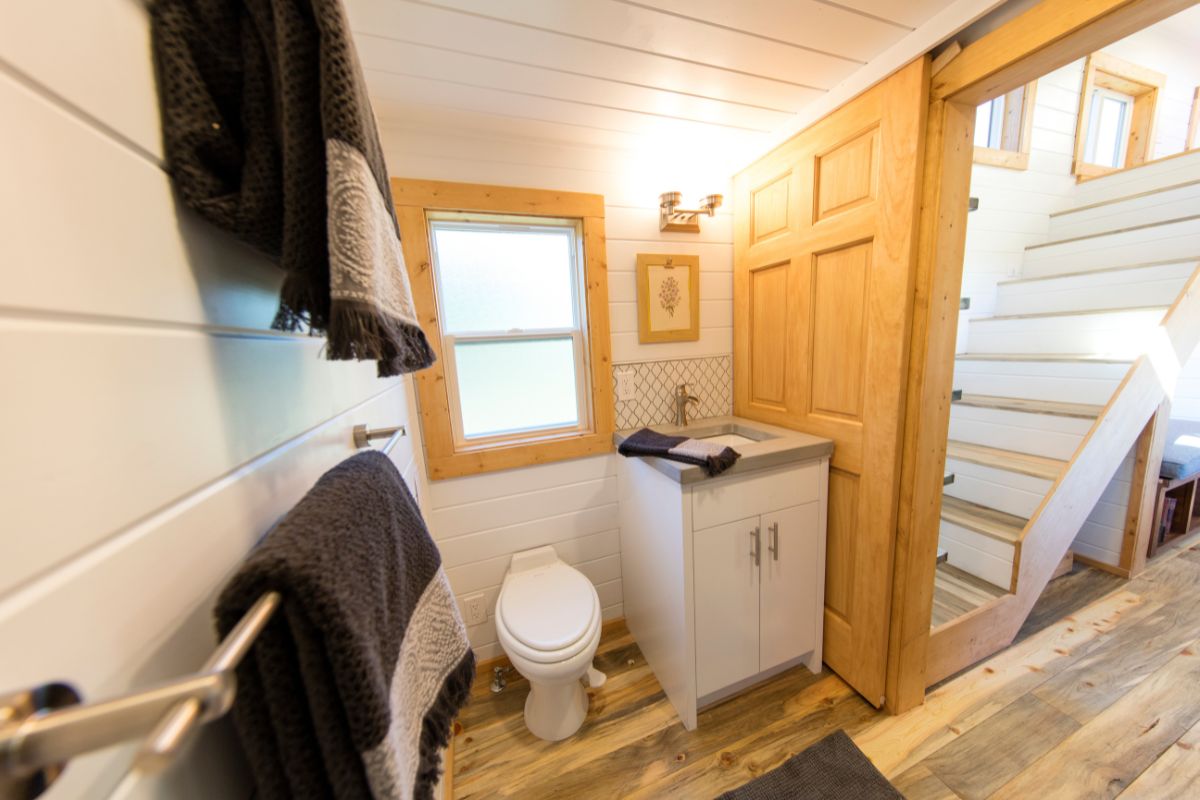How to Move to a Tiny Home
Moving to a tiny home, whether from an urban setting to a rural area or vice versa, requires careful planning and coordination. The compact size of these homes makes them mobile and easier to set up and move into, but there are still significant logistics involved.
When considering a move, it's important to work with a professional moving company experienced in handling unique relocations. For those relocating to tiny homes in Canada, finding expert moving services is a trustworthy option if you want someone to help with your belongings. Find an agency that offers comprehensive moving services tailored to various needs, including local, long-distance, and cross-border moves. Their expertise ensures that your belongings are transported safely and efficiently, which will give you peace of mind throughout the process.
Why Tiny Homes Are Becoming Popular
The rising cost of real estate and the increasing desire for sustainable living are two major factors driving the popularity of tiny homes in Canada. According to a report by the Canada Mortgage and Housing Corporation (CMHC), the average price of a home in Canada was $688,000 in 2021, making homeownership unattainable for many Canadians. In contrast, these small dwellings, typically less than 400 square feet, offer an affordable alternative to conventional housing. They typically cost between $30,000 and $100,000, depending on size, materials, and customization. They are easier to maintain, require less energy, and have a smaller environmental footprint.
In urban areas, tiny homes provide a practical solution for individuals and families facing high rental prices and limited housing availability. In rural areas, they offer an opportunity to live closer to nature without the burden of a large mortgage. The flexibility of tiny homes also means they can be placed on various plots, from city lots to countryside acreages, making them a versatile housing option.
Benefits of Tiny Homes
Affordability
One of the most significant benefits of tiny homes in Canada is affordability. The cost to build a tiny home is substantially lower than a traditional house, making homeownership more accessible, especially for younger generations and first-time buyers. Furthermore, the reduced size means lower utility bills and maintenance costs, contributing to long-term savings.
Minimalism
Tiny homes also promote a minimalist lifestyle. With limited space, residents are encouraged to prioritize their belongings and eliminate unnecessary items. This can lead to a more organized, less cluttered living environment, which can improve overall well-being.
Eco-Friendliness
Sustainability is another crucial advantage. Tiny homes use fewer building materials and often incorporate eco-friendly features such as solar panels, composting toilets, and rainwater collection systems. This reduces the environmental impact and supports a more sustainable way of living.
.jpeg)
Challenges and Considerations
Despite their many benefits, tiny homes in Canada do come with challenges.
Regulations
Zoning laws and building codes vary widely across the country, and some areas have restrictions that make it difficult to place a tiny home. Prospective tiny homeowners must thoroughly research local regulations to ensure compliance.
Space
Another consideration is the limited space. While the compact size is one of the primary appeals of tiny homes, it can also be a drawback for those accustomed to more spacious living. Effective space management and multi-functional furniture are essential to make the most of the available area.
Finance
Financing a tiny home can be more complex than a traditional mortgage. Many financial institutions are hesitant to offer loans for tiny homes, viewing them as non-traditional investments. However, as the popularity of tiny homes grows, more lenders are beginning to recognize their potential and offer financing options.
Tiny Homes in Urban Areas
In cities, tiny homes can help alleviate housing shortages and provide affordable living options. Urban tiny home communities are emerging, offering shared amenities and fostering a sense of community among residents. These communities often include communal gardens, co-working spaces, and recreational areas, enhancing the overall quality of life.
Urban tiny homes can be placed on small plots of land, in backyards, or even on rooftops, making use of underutilized spaces. They can serve as primary residences, guest houses, or rental units, providing flexibility for homeowners and contributing to the diverse housing landscape of the city.
Tiny Homes in Rural Areas
In rural settings, tiny homes offer a chance to live closer to nature and enjoy a peaceful, slower-paced lifestyle. They are ideal for those who seek a simpler way of living and wish to reduce their environmental impact. Rural tiny homes can be placed on large plots of land, allowing for gardens, workshops, or other outdoor activities.
For many, the appeal of rural tiny homes lies in their potential for self-sufficiency. Off-grid living is more feasible in rural areas, with the opportunity to install solar panels, wind turbines, and other sustainable technologies. This not only reduces living costs but also promotes a more eco-friendly lifestyle.
The Future of Tiny Homes in Canada
The future looks promising for tiny homes as more people recognize their benefits and the lifestyle they offer. Government support and changes to zoning laws can further facilitate the growth of the tiny home movement. Some municipalities are already adapting their regulations to accommodate tiny homes, recognizing their potential to address housing shortages and promote sustainable living.
As the movement grows, innovations in tiny home design and construction will continue to evolve. Builders and architects are exploring new materials and technologies to create more efficient, comfortable, and affordable tiny homes. Additionally, the rise of prefabricated and modular tiny homes makes them more accessible and easier to build.
The Takeaway
Tiny homes in Canada represent a shift towards more sustainable, simplified, and affordable living. They offer solutions to urban housing shortages and opportunities for rural self-sufficiency. As the movement continues to gain traction, tiny homes are poised to become a significant part of Canada’s housing landscape, providing diverse and flexible living options for people across the country.






Share: